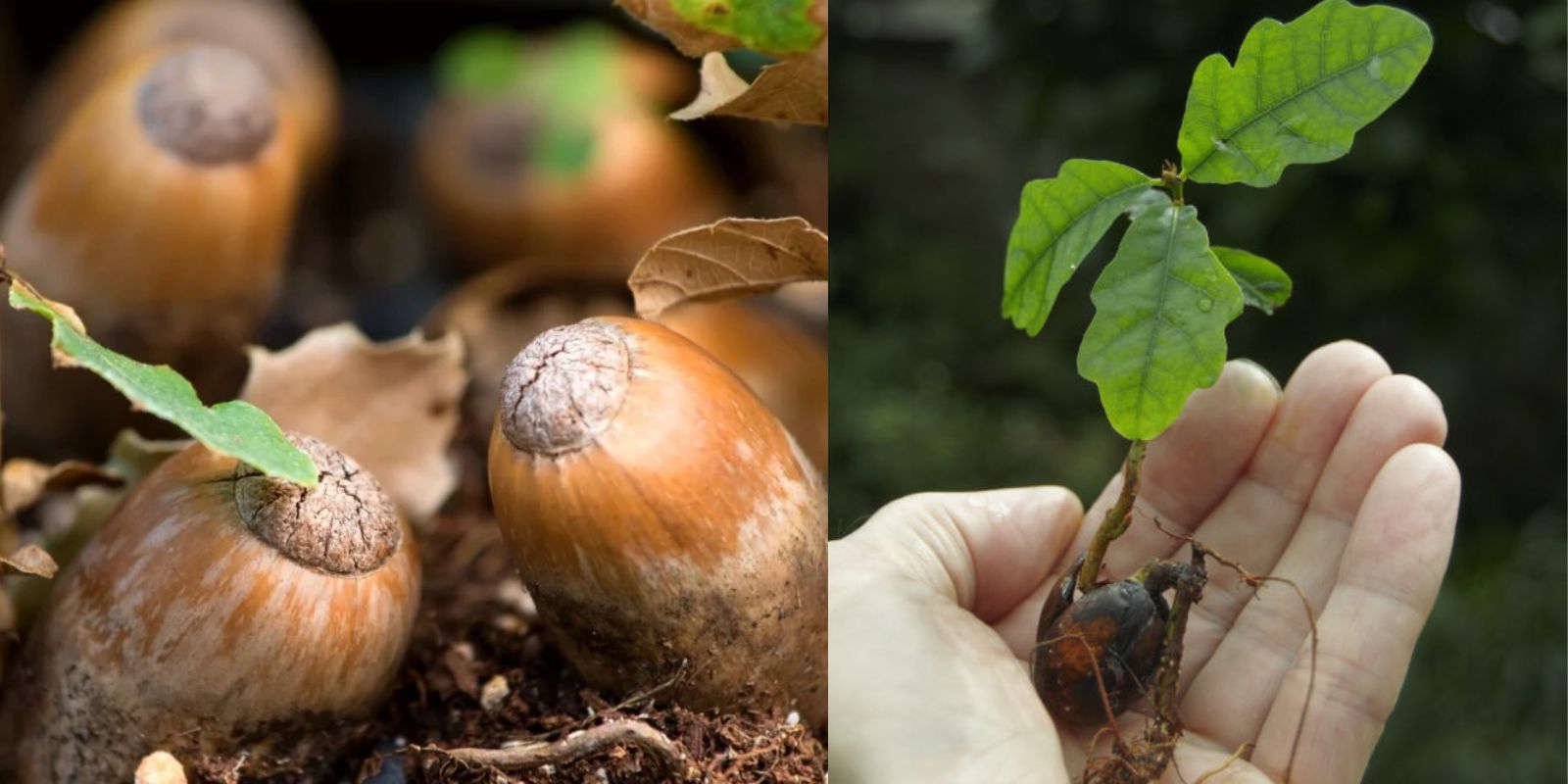Introduction
Growing an oak tree from an acorn is a beautiful way to contribute to the environment while leaving behind a living legacy. Oak trees are known for their strength, longevity, and ability to support wildlife, making them a valuable addition to any landscape. While the process of growing an oak tree from an acorn may seem challenging, it’s actually simple with the right steps. This article will walk you through the entire process, from selecting the perfect acorn to caring for your growing tree.
Why Grow an Oak Tree from an Acorn?
Planting an oak tree offers several benefits:
- Environmental Impact: Oak trees improve air quality, prevent soil erosion, and provide shade.
- Wildlife Habitat: Oaks support birds, squirrels, insects, and other wildlife with food and shelter.
- Personal Reward: Watching your tree grow from a small acorn to a towering oak is an incredibly fulfilling experience.
Step 1: Collecting the Right Acorns
The first step in growing an oak tree is finding healthy acorns. Here’s how:
- Timing: Acorns mature in the fall. Collect them during September to November when they naturally fall to the ground.
- Choosing Healthy Acorns: Look for brown acorns that are intact. Avoid those with cracks, holes, or signs of mold.
- Float Test: Place the acorns in a bowl of water. Healthy acorns will sink, while damaged or hollow ones will float. Discard the floaters.
Step 2: Preparing the Acorns for Planting
To ensure successful germination, acorns need to undergo a process called cold stratification, which mimics winter conditions.
- Cold Stratification:
- Place the viable acorns in a plastic bag filled with moist sand or peat moss.
- Seal the bag and store it in the refrigerator for 6–8 weeks at a temperature of 32–40°F (0–4°C).
- Check periodically to ensure the medium remains moist but not soggy.
- Signs of Germination: After a few weeks, you may notice small roots emerging from the acorns. This is a sign that they are ready for planting.
Step 3: Planting the Acorns
Once the acorns have germinated, it’s time to plant them.
- Choose a Location or Pot:
- For Pots: Use a deep container with drainage holes to accommodate the oak’s long taproot.
- For Direct Planting: Pick a location with plenty of sunlight and well-draining soil.
- Planting Depth:
- Dig a hole 1–2 inches deep and place the acorn with the root pointing downward.
- Cover the acorn with soil and lightly press down to secure it.
- Spacing: If planting multiple acorns, space them at least 10–15 feet apart to allow room for growth.
Step 4: Watering and Initial Care
Proper care during the early stages is essential for the acorn to thrive.
- Watering: Keep the soil consistently moist but not waterlogged. Overwatering can cause the acorn to rot.
- Mulching: Add a thin layer of mulch around the planted acorn to retain moisture and regulate soil temperature.
- Protection: Use a small wire cage or plastic tree guard to protect the acorn from animals like squirrels and deer.
Step 5: Caring for the Seedling
As the acorn develops into a seedling, it will require ongoing care.
- Sunlight: Ensure the seedling gets full sunlight to encourage healthy growth.
- Weeding: Remove any competing weeds around the seedling to prevent them from stealing nutrients.
- Fertilizing: Avoid using heavy fertilizers during the first year. If needed, use a diluted, balanced fertilizer.
- Pest Control: Check for pests like aphids or caterpillars and address them with organic solutions if necessary.
Step 6: Transplanting (If Grown in a Pot)
If you started your oak tree in a pot, you’ll need to transplant it to a permanent location once it outgrows the container.
- Timing: Transplant during late fall or early spring when the tree is dormant.
- Preparation: Choose a spot with ample space, as oaks can grow large. Dig a hole twice as wide and as deep as the pot.
- Transplanting: Carefully remove the seedling from the pot, keeping the roots intact. Place it in the hole, backfill with soil, and water thoroughly.
Long-Term Care for Your Oak Tree
Oak trees require minimal care once established, but a few practices will ensure they thrive:
- Watering: Water deeply during dry spells, especially in the first few years.
- Pruning: Remove any dead or damaged branches to promote healthy growth.
- Monitoring: Check for signs of disease or pests like oak wilt or caterpillars. Address issues promptly.
- Patience: Oaks are slow growers, but their strength and longevity are worth the wait.
Benefits of Growing Your Own Oak Tree
Growing an oak tree from an acorn isn’t just about planting a tree; it’s about making a difference. Some key benefits include:
- Legacy: An oak tree can live for hundreds of years, standing as a testament to your efforts.
- Carbon Sequestration: Oaks absorb significant amounts of CO2, helping combat climate change.
- Beauty: Oaks add character to your landscape with their majestic presence.
Fun Facts About Oak Trees
- Oak trees can produce thousands of acorns in a single year, but only a few will grow into trees.
- The oldest oak tree in the world is over 1,000 years old.
- Oaks are a symbol of strength, endurance, and wisdom in many cultures.
Get Started Today!
There’s something magical about watching an acorn transform into a towering oak tree. With patience, care, and these simple steps, you can grow your very own oak tree and contribute to a greener planet.
Have you ever grown a tree from seed? Share your experiences and photos in the comments below! 🌳
#GrowYourLegacy #OakTreeJourney #PlantingForTheFuture #DIYTreeGrowing #GardeningLife #EnvironmentallyFriendly

